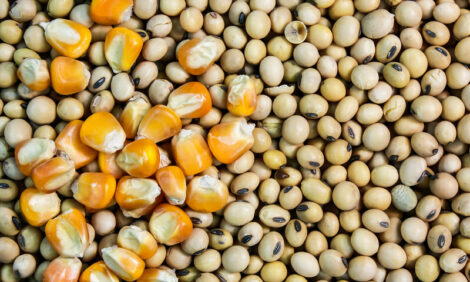



Cut Drying and Speed Harvest With Baleage During Wet Summers
US - The 2013 hay season, with little sunshine and lots of rain, increases interest in making baleage, or silage in a bag, says Rob Kallenbach, University of Missouri Extension forage specialist.Baleage reduces hay harvest time from three or more days to one day. "You can usually find one clear day to harvest baleage, even in May, our wettest month," Mr Kallenbach says.
He knows the system works. He made baleage this spring for dairy and beef herds at the MU Southwest Center, Mount Vernon. Many farmers who tried to dry hay have yet to make their first cutting.
"There were very few days of dry weather for making big bales between rains this spring," Mr Kallenbach adds.
With baleage, forage to be ensiled goes into a plastic bag at high moisture, up to 65 percent. In comparison, hay should be dried to 16 percent moisture before rolled into big, round bales. Hay baled wet can burn.
The big danger in making baleage will be letting hay become too dry before wrapping. Forage needs moisture to ensile. Baleage can be made down to 40 percent moisture, but drier hay carries more oxygen into the wrapping.
For baleage, cut the forage and roll it into big bales, Kallenbach says. That's similar to making dry hay. Then the bales are tightly wrapped in plastic to seal out oxygen. Inside the oxygen-free package, the forage ferments as in silage-making. Ensiling converts sugars into lactic acid, which preserves forage quality.
"Compare it to pickling," Mr Kallenbach says. "Cattle love baleage. They eat everything, with little waste."
Skimping on plastic wrap and not getting a good stretch-wrap seal around the bale creates problems. The wrapped bales must be airtight. If oxygen enters, the forage turns to mold.
"A quarter-size hole in the plastic results in a basketball-size spoiled area," Mr Kallenbach said. "Puncture holes can be sealed with tape. That requires frequent checks of wrapped bales."
Big birds and rodents puncture the plastic. A bigger threat can be a pre-teen farm boy doing stunts around the bales, he discovered.
Also, it's better to let weeds grow up around wrapped bales than mowing too close.
"If you see those long white objects that look like a giant caterpillar, that is baleage wrapped into a continuous row of bales," Mr Kallenbach says.
Making baleage requires a separate machine that takes the big bales delivered to it for a spiral wrap of overlapping plastic.
The 1-mil plastic sheeting, which comes in a roll, overlaps to provide at least a 4-mil-thick wrap.
More wrapping may be needed if bales are to be sold and transported.
Some baleage can be made into individually wrapped packages. Farmers find the preferred method is continuous in-line wraps, Kallenbach says. That eliminates need for end wraps on bales.
A hold back to adoption has been the cost of wrapping machines. The more expensive continuous wrappers cost $28,000 to $30,000.
That cost opens a chance for entrepreneurs to custom-wrap bales. The operator wraps and supplies the plastic at a set fee per bale.
Producers make bales and deliver them to the custom operator at the storage site.
An advantage of baleage is getting hay harvested early before seed heads set, when nutrient content is highest.
Early harvest allows quality regrowth during the cool-season-grass spring growth period. More high-quality forage can be harvested after the first cutting.
Livestock benefit from improved feed quality, making more gains or milk.
Baleage will be demonstrated June 20 at the Dairy Field Day at the MU Southwest Center, Mount Vernon. The agenda is on the research farm website at aes.missouri.edu/swcenter. The program is free.



